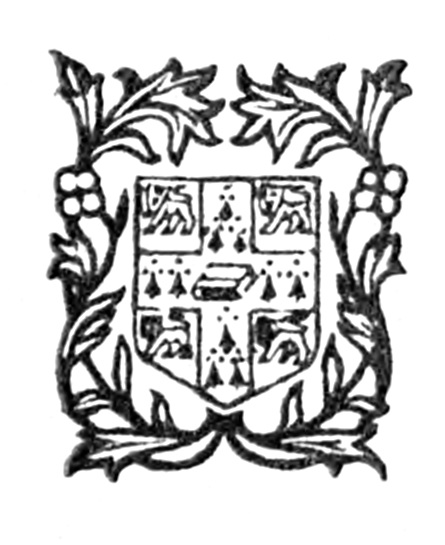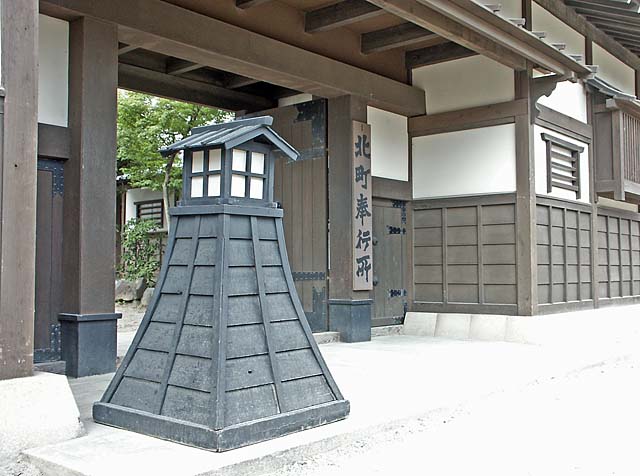|
Hyōgo Bugyō
were officials of the Tokugawa shogunate in Amagasaki Domain, during the Edo period of Japan. Appointments to this prominent office were usually '' fudai daimyō'', but this was amongst the senior administrative posts open to those who were not daimyō.Beasley, William G. (1955). ''Select Documents on Japanese Foreign Policy, 1853–1868'', p. 325. Conventional interpretations have construed these Japanese titles as "commissioner", "overseer" or "governor". History The port at Hyōgo was originally known as the , as described in the Nihon Shoki and other records describing the founding of the Ikuta Shrine by Empress Jingū in 201 AD. For most of its history, this coastal area was not a single political entity. During the Edo period, the eastern parts of present-day Kobe came under the jurisdiction of the Amagasaki Domain and the western parts were encompassed within the Akashi Domain, and the center was controlled directly by the Tokugawa shogunate. This '' bakufu'' title ... [...More Info...] [...Related Items...] OR: [Wikipedia] [Google] [Baidu] |
Tokugawa Shogunate
The Tokugawa shogunate (, Japanese 徳川幕府 ''Tokugawa bakufu''), also known as the , was the military government of Japan Japan ( ja, 日本, or , and formally , ''Nihonkoku'') is an island country in East Asia. It is situated in the northwest Pacific Ocean, and is bordered on the west by the Sea of Japan, while extending from the Sea of Okhotsk in the no ... during the Edo period from 1603 to 1868.Louis-Frédéric, Nussbaum, Louis-Frédéric. (2005)"''Tokugawa-jidai''"in ''Japan Encyclopedia'', p. 978.Nussbaum"''Edo-jidai''"at p. 167. The Tokugawa shogunate was established by Tokugawa Ieyasu after victory at the Battle of Sekigahara, ending the civil wars of the Sengoku period following the collapse of the Ashikaga shogunate. Ieyasu became the ''shōgun,'' and the Tokugawa clan governed Japan from Edo Castle in the eastern city of Edo (Tokyo) along with the ''daimyō'' lords of the ''samurai'' class.Nussbaum"Tokugawa"at p. 976. The Tokugawa shogunate organized ... [...More Info...] [...Related Items...] OR: [Wikipedia] [Google] [Baidu] |
Bakufu
, officially , was the title of the military dictators of Japan during most of the period spanning from 1185 to 1868. Nominally appointed by the Emperor, shoguns were usually the de facto rulers of the country, though during part of the Kamakura period, shoguns were themselves figureheads, with real power in hands of the Shikken of the Hōjō clan. The office of shogun was in practice hereditary, though over the course of the history of Japan several different clans held the position. The title was originally held by military commanders during Heian period in the eighth and ninth centuries. When Minamoto no Yoritomo gained political ascendency over Japan in 1185, the title was revived to regularize his position, making him the first shogun in the usually understood sense. The shogun's officials were collectively referred to as the ; they were the ones who carried out the actual duties of administration, while the Imperial court retained only nominal authority.Beasley, William G. ... [...More Info...] [...Related Items...] OR: [Wikipedia] [Google] [Baidu] |
Cambridge University Press
Cambridge University Press is the university press of the University of Cambridge. Granted letters patent by Henry VIII of England, King Henry VIII in 1534, it is the oldest university press in the world. It is also the King's Printer. Cambridge University Press is a department of the University of Cambridge and is both an academic and educational publisher. It became part of Cambridge University Press & Assessment, following a merger with Cambridge Assessment in 2021. With a global sales presence, publishing hubs, and offices in more than 40 Country, countries, it publishes over 50,000 titles by authors from over 100 countries. Its publishing includes more than 380 academic journals, monographs, reference works, school and university textbooks, and English language teaching and learning publications. It also publishes Bibles, runs a bookshop in Cambridge, sells through Amazon, and has a conference venues business in Cambridge at the Pitt Building and the Sir Geoffrey Cass Spo ... [...More Info...] [...Related Items...] OR: [Wikipedia] [Google] [Baidu] |
RoutledgeCurzon
Routledge () is a British multinational publisher. It was founded in 1836 by George Routledge, and specialises in providing academic books, journals and online resources in the fields of the humanities, behavioural science, education, law, and social science. The company publishes approximately 1,800 journals and 5,000 new books each year and their backlist encompasses over 70,000 titles. Routledge is claimed to be the largest global academic publisher within humanities and social sciences. In 1998, Routledge became a subdivision and imprint of its former rival, Taylor & Francis Group (T&F), as a result of a £90-million acquisition deal from Cinven, a venture capital group which had purchased it two years previously for £25 million. Following the merger of Informa and T&F in 2004, Routledge became a publishing unit and major imprint within the Informa "academic publishing" division. Routledge is headquartered in the main T&F office in Milton Park, Abingdon, Oxfordshire and a ... [...More Info...] [...Related Items...] OR: [Wikipedia] [Google] [Baidu] |
Oxford University Press
Oxford University Press (OUP) is the university press of the University of Oxford. It is the largest university press in the world, and its printing history dates back to the 1480s. Having been officially granted the legal right to print books by decree in 1586, it is the second oldest university press after Cambridge University Press. It is a department of the University of Oxford and is governed by a group of 15 academics known as the Delegates of the Press, who are appointed by the vice-chancellor of the University of Oxford. The Delegates of the Press are led by the Secretary to the Delegates, who serves as OUP's chief executive and as its major representative on other university bodies. Oxford University Press has had a similar governance structure since the 17th century. The press is located on Walton Street, Oxford, opposite Somerville College, in the inner suburb of Jericho. For the last 500 years, OUP has primarily focused on the publication of pedagogical texts a ... [...More Info...] [...Related Items...] OR: [Wikipedia] [Google] [Baidu] |
Bugyō
was a title assigned to ''samurai'' officials during the feudal period of Japan. ''Bugyō'' is often translated as commissioner, magistrate, or governor, and other terms would be added to the title to describe more specifically a given official's tasks or jurisdiction. Pre-Edo period In the Heian period (794–1185), the post or title of ''bugyō'' would be applied only to an official with a set task; once that task was complete, the officer would cease to be called ''bugyō''. However, in the Kamakura period (1185–1333) and later, continuing through the end of the Edo period (1603–1868), posts and title came to be created on a more permanent basis.Kinihara, Misako''The Establishment of the Tosen-bugyō in the Reign of Ashikaga Yoshinori'' (唐船奉行の成立 : 足利義教による飯尾貞連の登用) Tokyo Woman's Christian University. ''Essays and S.tudies''. Abstract. Over time, there came to be 36 ''bugyō'' in the bureaucracy of the Kamakura shogunate. In 14 ... [...More Info...] [...Related Items...] OR: [Wikipedia] [Google] [Baidu] |
Shibata Takenada , Train Coupler
{{disambiguation, geo ...
Shibata may refer to: Places * Shibata, Miyagi, a town in Miyagi Prefecture * Shibata District, Miyagi, a district in Miyagi Prefecture * Shibata, Niigata, a city in Niigata Prefecture ** Shibata Station (Niigata), a railway station in Niigata Prefecture * Shibata Station (Aichi), a railway station in Aichi Prefecture Other uses *Shibata (surname), a Japanese surname *Shibata clan, Japanese clan originating in the 12th century *Shibata coupler A coupling (or a coupler) is a mechanism typically placed at each end of a railway vehicle that connects them together to form a train. A variety of coupler types have been developed over the course of railway history. Key issues in their desig ... [...More Info...] [...Related Items...] OR: [Wikipedia] [Google] [Baidu] |
Louis Cullen
Louis Michael Cullen (born 1932) is an Irish diplomat, academic, historian, author and Japanologist.2003 "Riverdance Originators Among Five Distinguished Honorary Degree Recipients," ''University News'' (National University of Ireland Maynooth), June 2003, p. 2; retrieved 2012-11-9. He is Professor of Modern Irish History at Trinity College in . has described him as "the most prolific ... [...More Info...] [...Related Items...] OR: [Wikipedia] [Google] [Baidu] |
Akashi Domain
was a feudal domain under the Tokugawa shogunate of Edo period Japan, located in Harima Province in what is now the southern portion of modern-day Hyōgo Prefecture. It was centered around Akashi Castle, which is located in what is now the city of Akashi, Hyōgo. History At the start of the Edo period, the area around Akashi was part of the vast holdings of the Ikeda clan of Himeji Domain. In 1617, Ikeda Mitsumasa was transferred to Tottori Domain and his former estates were divided. Ogasawara Tadazane, the son-in-law of Matsudaira Nobuyasu received a 100,000 '' koku'' portion, which formed Akashi Domain, and he was ordered to construct a castle. Akashi Castle was located on a strategic location controlling the San'yōdō highway, which connected the Kinai region with western Japan and was also the main route north to Tanba and Tango Provinces. It was also located very near the coast of the Seto Inland Sea, overlooking the narrows to the island of Awaji island. Consid ... [...More Info...] [...Related Items...] OR: [Wikipedia] [Google] [Baidu] |
Amagasaki Domain
250px, Reconstructed Amagasaki Castle tenshu was a feudal domain under the Tokugawa shogunate of Edo period Japan, located in Settsu Province in what is now the southeastern portion of modern-day Hyōgo Prefecture. It had its administrative headquarters at Amagasaki Castle. The domain extended over parts of Settsu Province that correspond to portions of the cities of Amagasaki, Nishinomiya, Ashiya, Kobe, Itami, and Takarazuka, in modern-day Hyōgo Prefecture. It was controlled by the ''fudai daimyō'' Aoyama clan followed by the Sakurai-branch of the Matsudaira clan">DF 6 of 80/nowiki> retrieved 2013-5-5. Histo ... followed by the Sakurai-branch of the Matsudaira clan throughout most of its history. History Takebe Mitsushige was the 700 '' koku'' Amagasaki ''gundai'' under Toyotomi Hideyoshi, and was married to an adopted daughter of Ikeda Terumasa. In 1615, his son Takebe Matsunaga distinguished himself in the Siege of Osaka and as a result, he was awarded (jointl ... [...More Info...] [...Related Items...] OR: [Wikipedia] [Google] [Baidu] |
Jingū Of Japan
Jingu may refer to: People *Empress Jingū (c. AD 169–269) *Toshio Jingu (born 1948), a Japanese fencer Other uses *Jingu Stadium, Tokyo, Japan *Jingū, a name for Shinto shrines connected to the Imperial House of Japan *Busanjin District, South Korea, abbreviated locally as "Jin-gu" *Ise Grand Shrine, known simply as ''Jingū'' (''The Shrine'') *''Jingū taima'', an ''ofuda In Shinto and Buddhism in Japan, an is a talisman made out of various materials such as paper, wood, cloth or metal. are commonly found in both Shinto shrines and Buddhist temples and are considered to be imbued with the power of the deiti ...'' issued by the Ise Grand Shrine {{disambiguation, surname Japanese-language surnames ... [...More Info...] [...Related Items...] OR: [Wikipedia] [Google] [Baidu] |




.jpg)

